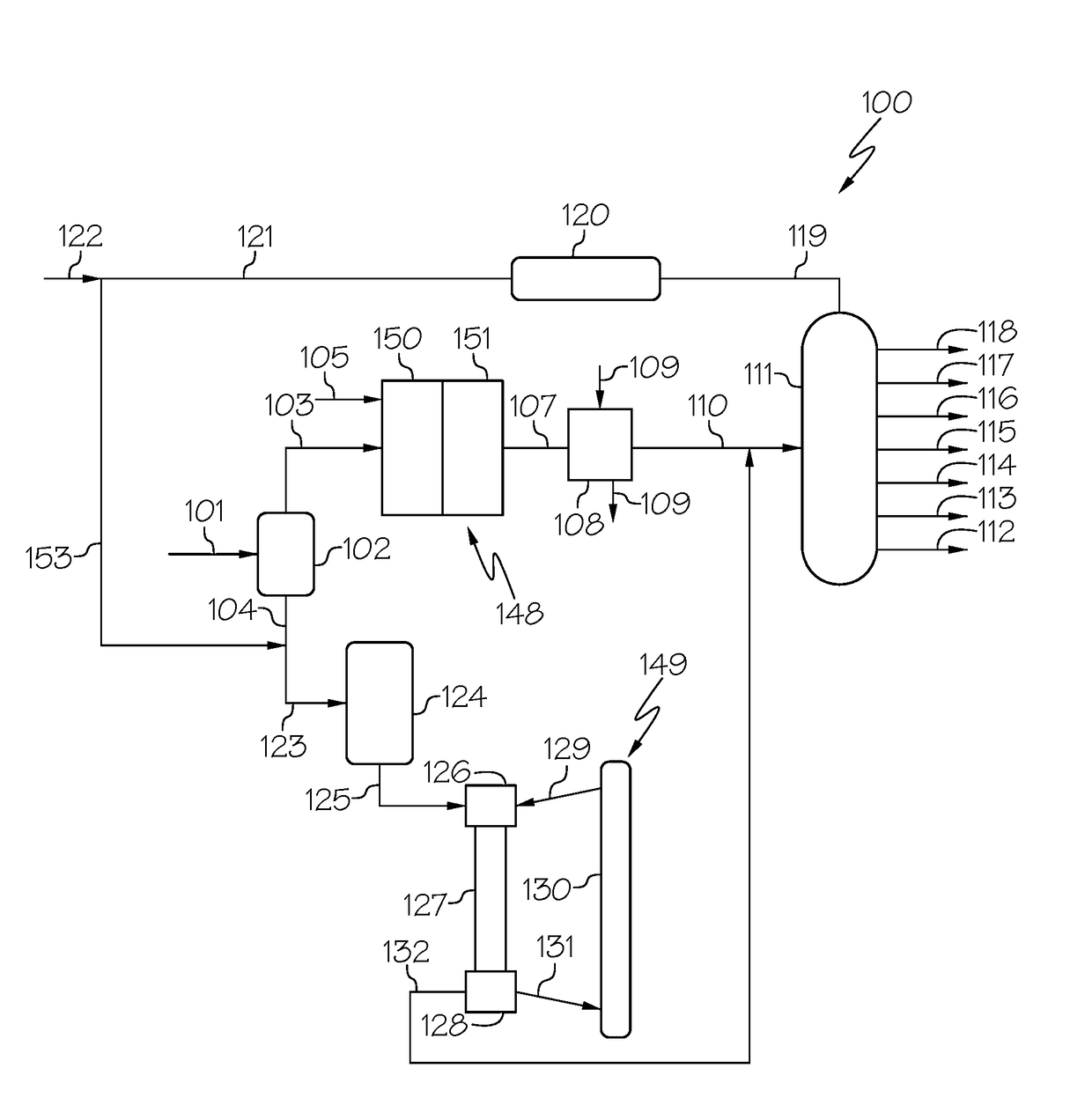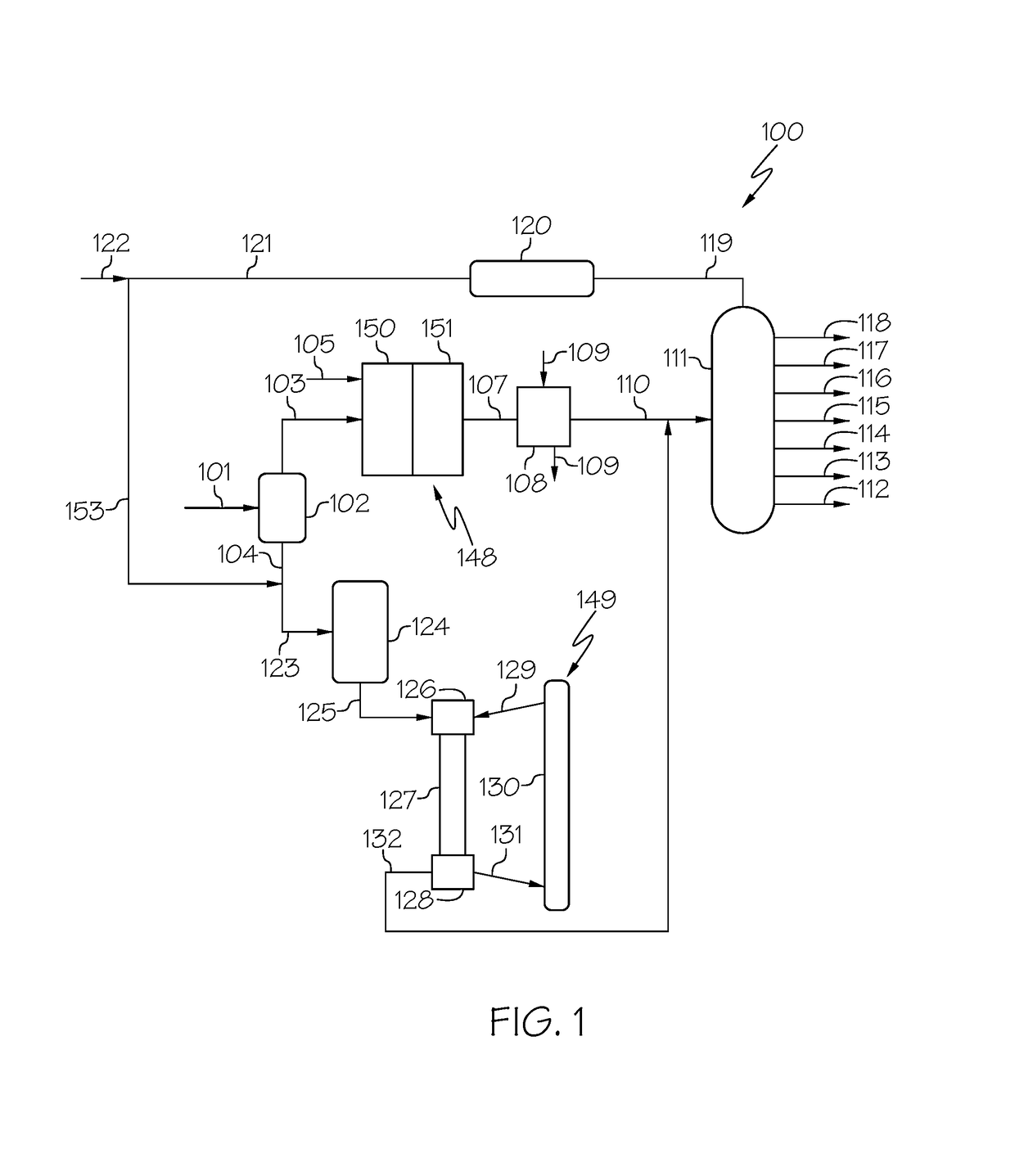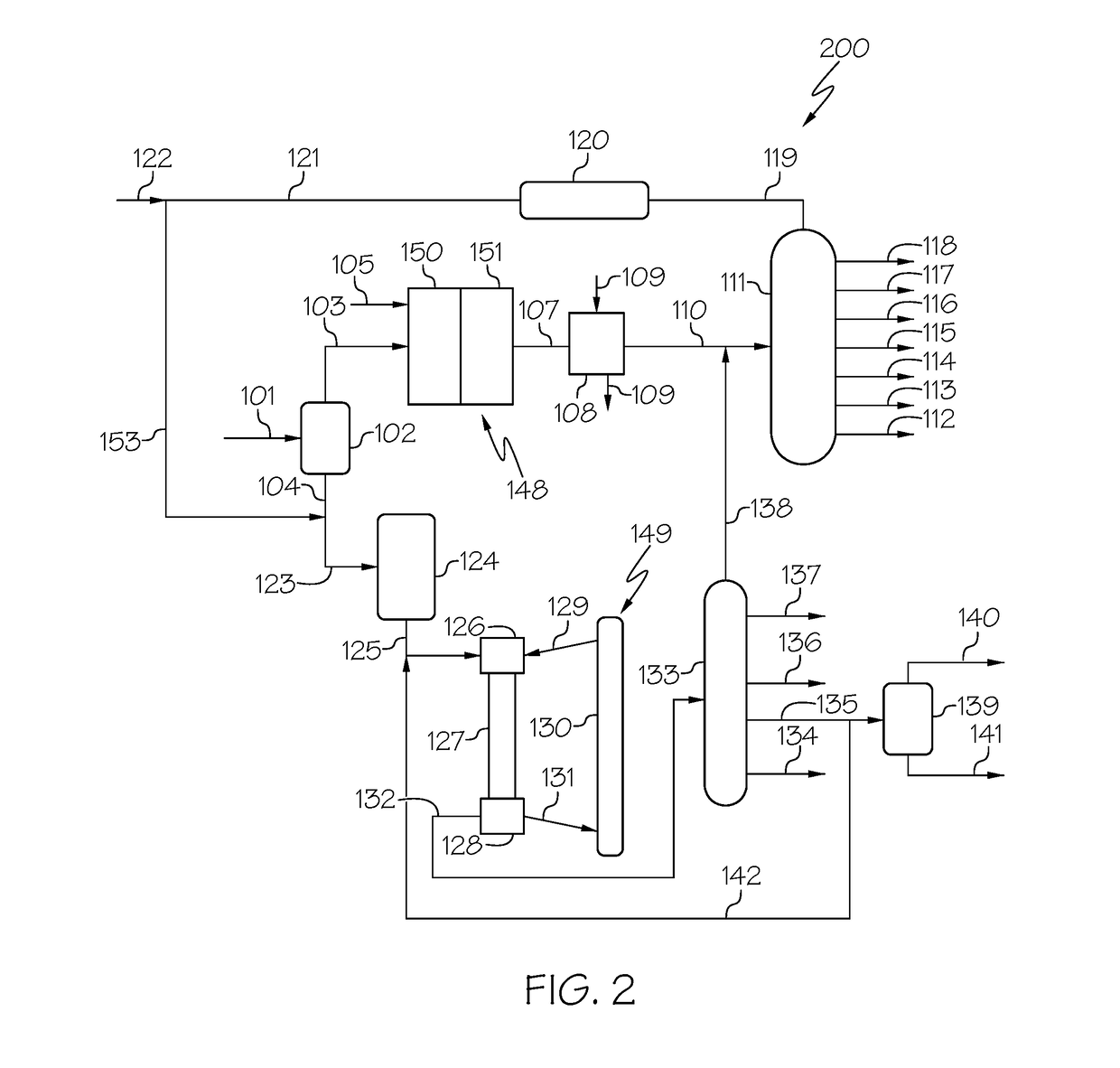Systems and methods for the conversion of feedstock hydrocarbons to petrochemical products
a technology of hydrocarbons and feedstocks, applied in the direction of hydrocarbon oil cracking, hydrocarbon oil treatment products, thermal non-catalytic cracking, etc., can solve the problems of limited distillation of feedstocks, oils or residues, energy-intensive processing steps, etc., and achieve the effect of low cost and less expensiv
- Summary
- Abstract
- Description
- Claims
- Application Information
AI Technical Summary
Benefits of technology
Problems solved by technology
Method used
Image
Examples
examples
[0044]The various embodiments of methods and systems for the conversion of a feedstock hydrocarbons will be further clarified by the following examples. The examples are illustrative in nature, and should not be understood to limit the subject matter of the present disclosure.
example 1
[0046]Product yields were computer modeled for the reactor systems depicted in FIGS. 1 and 2 where the crude oil feedstock of Table 2A was separated into two fractions and subsequently processed in a steam cracker unit and high-severity fluid catalytic cracking reactor unit, respectively. The high-severity fluid catalytic cracking reaction was computer modeled using an HS-FCC ASPEN simulation and the steam cracking reaction was modeled in SPYRO. The model was based on the Arab light crude oil being separated into fractions having a boiling point of greater than 345° C. (processed in the HS-FCC reactor) and less than 345° C. (processed in the steam cracker). The model accounted for the fraction fed to the HS-FCC reactor being hydrotreated to remove a portion of nitrogen, sulfur, and metals prior to its cracking in the HS-FCC reactor. The composition of the feed following hydroprocessing was experimentally determined in a pilot plant, and was the same as shown in Table 2A with referen...
example 2
[0047]Product yields were modeled for the reactor systems depicted in FIG. 3 where a crude oil feedstock was separated into two fractions and subsequently processed in a steam cracker unit and high-severity fluid catalytic cracking reactor unit, respectively, without the utilization of hydroprocessing. The integrated system was modeled in ASPEN with the high-severity fluid catalytic cracking reaction data observed using a bench scaled-down fluid catalytic cracking unit at 600° C. and catalyst to oil ratio of about 30, and the steam cracking reaction data produced by a model in SPYRO utilizing the same process parameters as disclosed in Example 1. The model was based on the light Arab crude oil being separated into fractions having a boiling point of greater than 350° C. (processed in the HS-FCC reactor) and less than 350° C. (processed in the steam cracker). The feedstock for which the model was conducted was the Arab light crude oil of Table 2A without hydroprocessing. The model re...
PUM
| Property | Measurement | Unit |
|---|---|---|
| boiling point | aaaaa | aaaaa |
| boiling point | aaaaa | aaaaa |
| boiling point | aaaaa | aaaaa |
Abstract
Description
Claims
Application Information
 Login to View More
Login to View More - R&D
- Intellectual Property
- Life Sciences
- Materials
- Tech Scout
- Unparalleled Data Quality
- Higher Quality Content
- 60% Fewer Hallucinations
Browse by: Latest US Patents, China's latest patents, Technical Efficacy Thesaurus, Application Domain, Technology Topic, Popular Technical Reports.
© 2025 PatSnap. All rights reserved.Legal|Privacy policy|Modern Slavery Act Transparency Statement|Sitemap|About US| Contact US: help@patsnap.com



